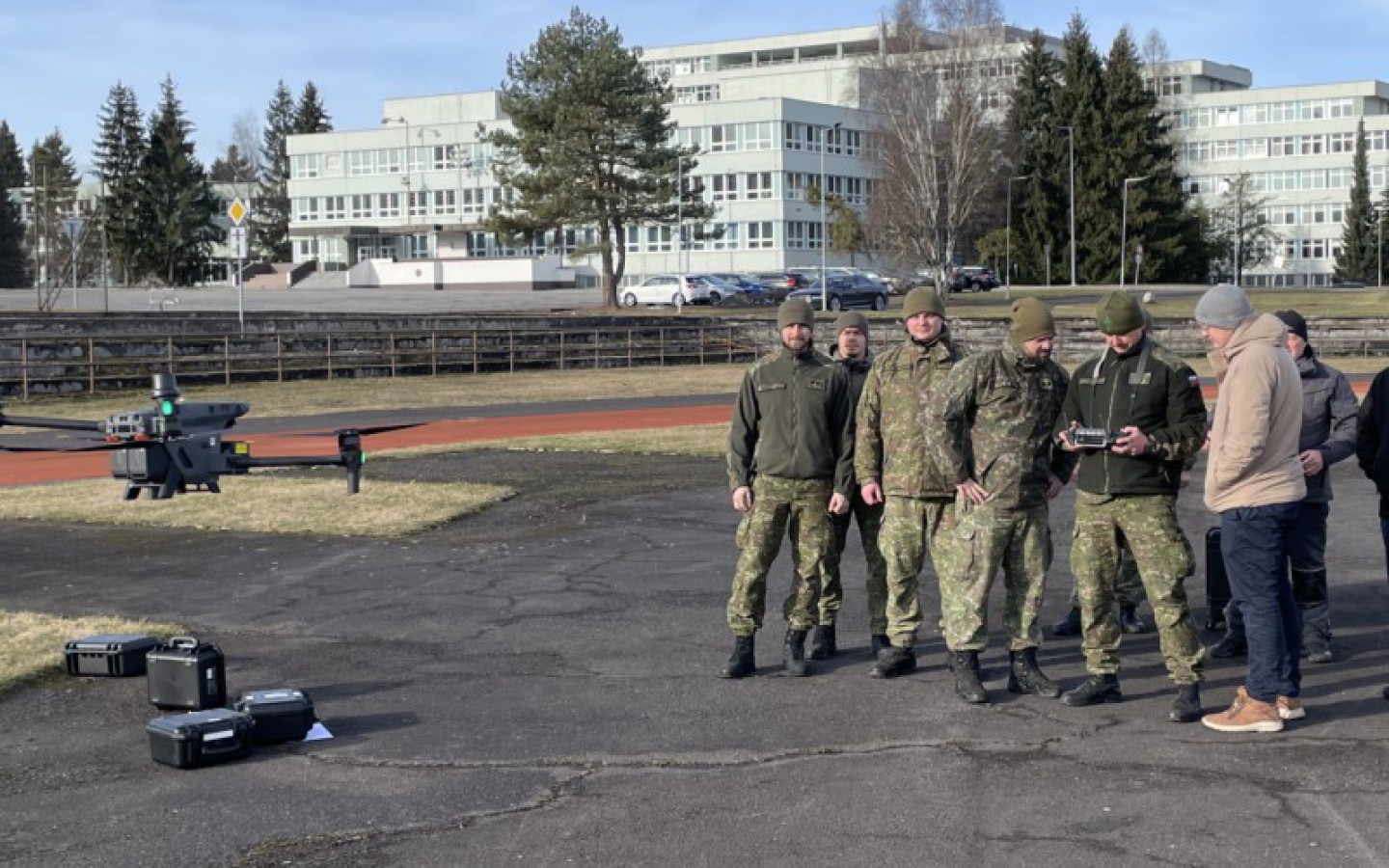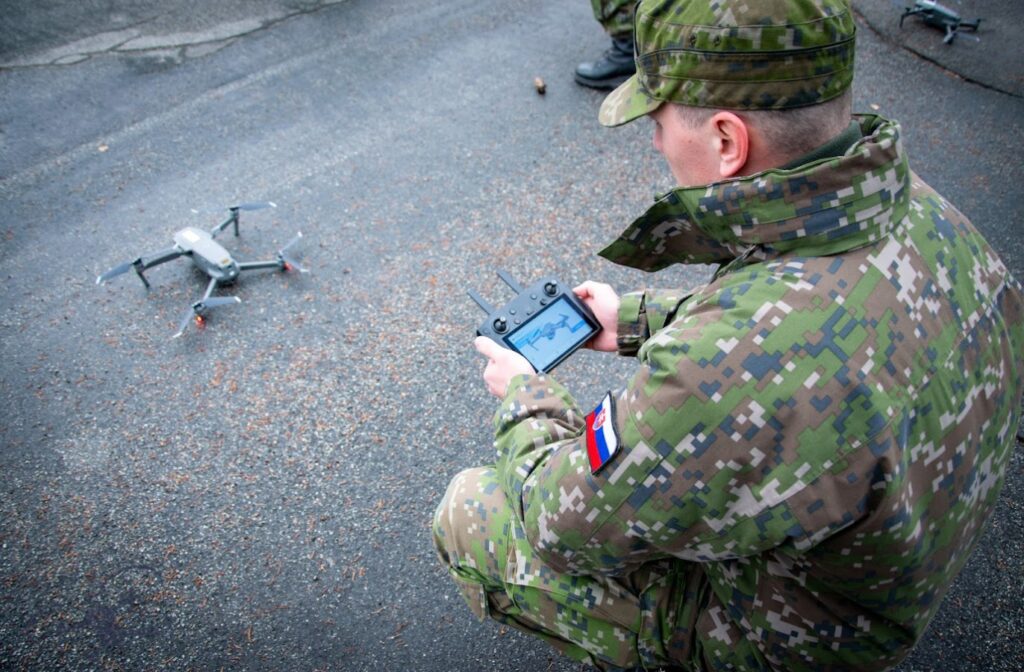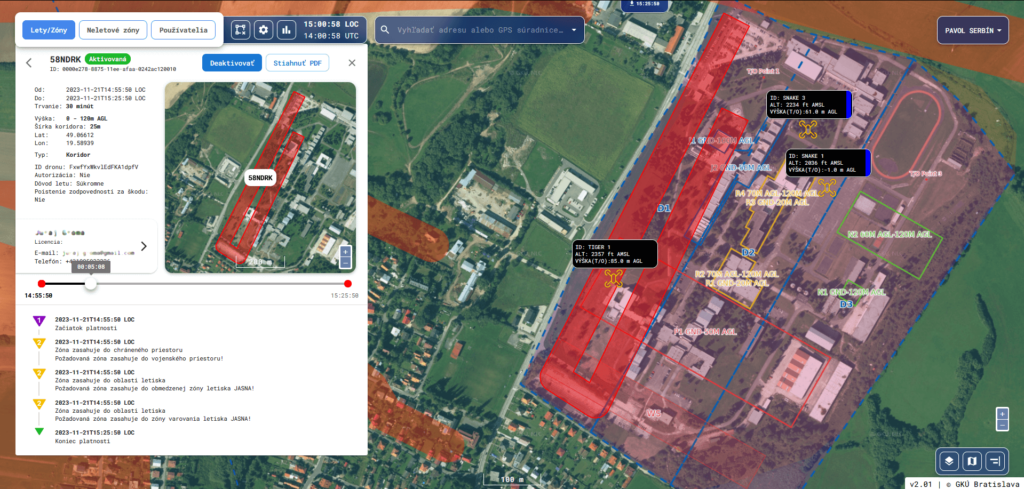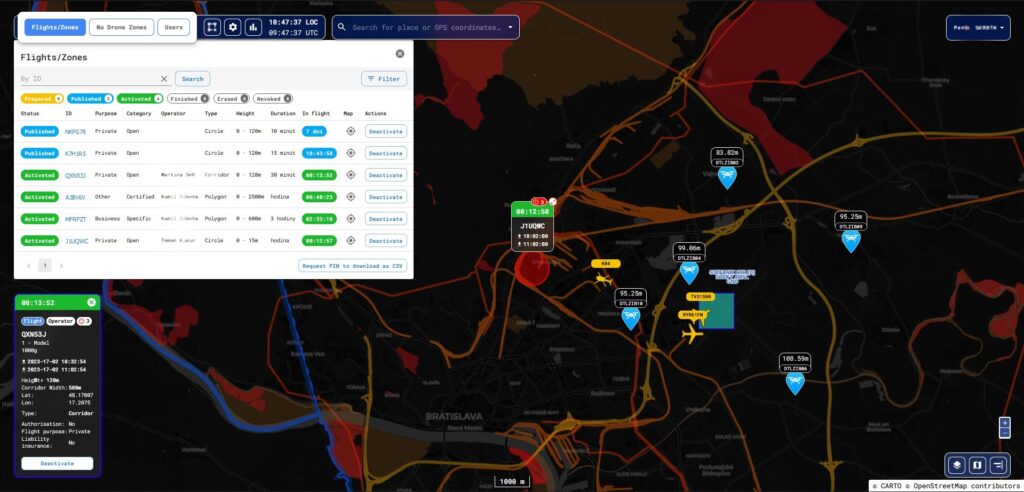
R-SYS demonstrated the capabilities of an integrated ATM/UTM system for the needs of the armed forces
R-SYS in cooperation with Dronetag and the Simulation Center of the General Milan Rastislav Štefánik Armed Forces Academy, conducted a dynamic demonstration of an integrated ATM/UTM system at the end of 2023 during the event “Ensuring UAS Operators Training in the Environment of the Armed Forces of the Slovak Republic.”
Project process and objectives
The IXO MIL system from R-SYS provided situational awareness within the training polygon, offering various types of dynamic and static data, including geographic zones, no-fly zones, and target object information. The system also facilitated notifications to trainees and non-verbal communication between the exercise leader and trainees through a chat tool. This solution is a functional equivalent of the UTM system (level U2), meeting the requirements set by the applicable EC(EU) regulations for UTM/U-Space.
Positional information and tracking of UAVs flying in the training area were conducted using two methods: DirectID via Bluetooth/WiFi and RemoteID via LTE networks. Positional data transmission from UAVs was ensured by Dronetag modules, fully integrated into the IXO MIL UTM solution. This originally civilian UTM solution was modified for use in various branches and components of the armed forces or law enforcement agencies, allowing the display of non-cooperative target positions using different types of surveillance sensors and communication with cUAS solutions via standard protocols.


Project results and benefits of the solution
The collaboration between the military and civilian sectors resulted in a successful demonstration of current technological capabilities in ATM/UTM integration and real-time UAS positional information display. The capability of real-time monitoring and tracking of various UAS through web and mobile applications based on the functional equivalent of the UTM system and access to specialized software providing relevant data about aerial vehicles was also showcased.
The utilized data and the tested IXO MIL application allowed the execution of pre-flight preparations, control and monitoring activities within the responsibility area, deconfliction between entities in the airspace, and warnings of potential violations of foreign responsibility areas. The demonstration aimed to actively showcase real-time compliance with the required safety levels through deconfliction and interoperability via systemic coordination, which can enhance task efficiency and adherence to national and international standards during training and special UAS missions.


The reduced workload for trainees, increased situational awareness, and provision of comprehensive situational overview throughout the exercise for the exercise leader were verified. This demonstration simultaneously showed how modified UTM systems could safely and efficiently manage drone operations even in challenging military environments.
This is particularly important as the pressure to integrate and ensure the coexistence of military and civilian manned and unmanned operations in shared airspace, especially at low and very low altitudes, will increasingly push for the implementation of UTM/U-Space rules and the automation and mutual integration of new and existing solutions into a reliable and economically efficient technological ecosystem.
